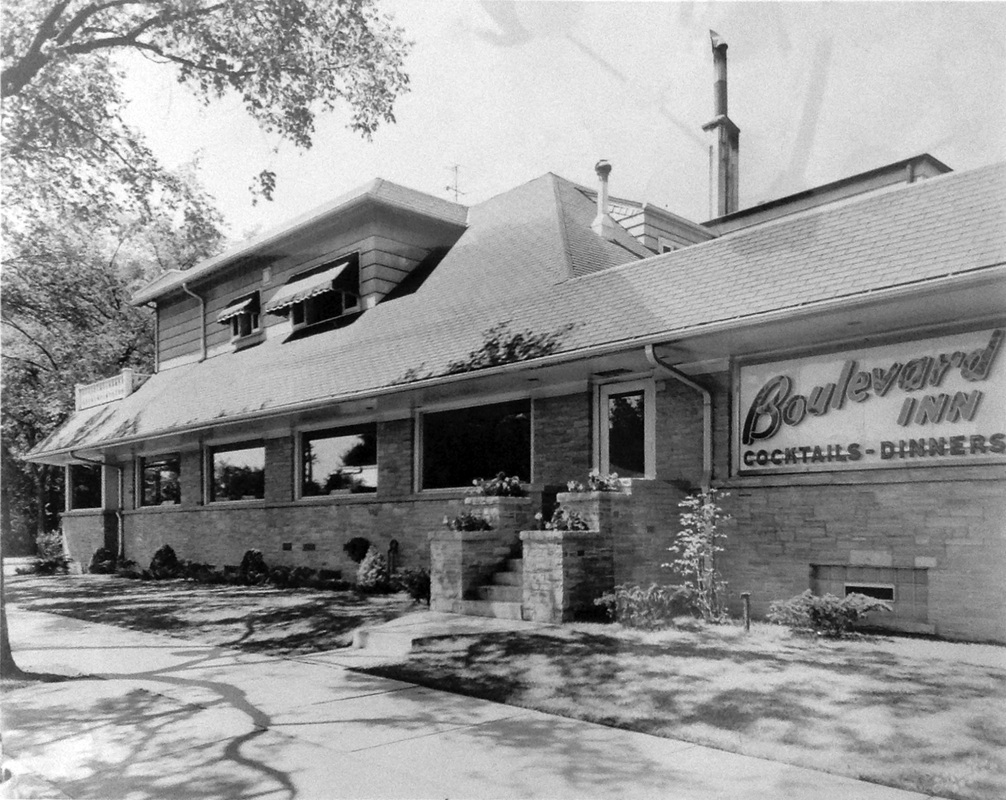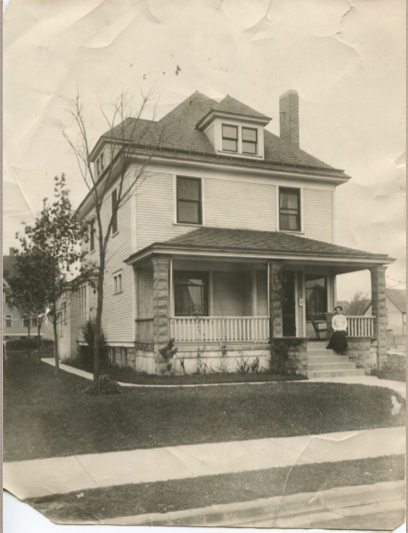The Suburban Landscape in Milwaukee, Wisconsin
The papers summarized below were capstone projects in the Spring 2014 course, "Methods in Buildings-Landscapes-Cultures," at UW-Madison. That semester the class focused on American suburban landscapes, and in particular early suburbs in Milwaukee and Madison. Students conducted fieldwork in these locations, learning how they reflected both national architectural trends and local fashions and customs. Click here to see projects from the same class on the Westmorland neighborhood in Madison.
|
Salvaging the Sense of Lost Place:
Boulevard Inn in Milwaukee, Wisconsin by Yuko Nakamura This essay explores an anchor place that is not operated as it was: Boulevard Inn in Milwaukee, Wisconsin. Boulevard Inn was a family-owned restaurant, first in the West Side and later in the East Side of Milwaukee. Started by the second generation of a German immigrant family in 1946, the restaurant operated until it was sold in 2003. The restaurant no longer materially exists: the first location was burned down by arson and ultimately razed, and the second location was extensively remodeled to a new restaurant. To investigate the sense of this materially lost place, I theoretically draw on the studies of space and place. Methodologically, I rely on the studies of displaced people and destructed place to overcome the inaccessibility to the original built environment. As an empirical case, I make two arguments by combining local newspaper articles, the holiday menus, and oral histories of the owner and a customer. First, a series of relocations of this family’s restaurant should be understood in the dynamics of city that involves both suburban and urban areas. Second, in addition to the changes of the built environment, the food they served significantly contributed to the sense of place at Boulevard Inn. In both the relocation and the “tweaking” of the menus, the customers were hidden authors of the place as well as the owner-managers of the restaurant. I conclude the essay by suggesting the significance of food in the research on the sense of lost place and discussing the methodological difficulties in incorporating food into the historical studies of place. |
|
The American Foursquare: A Creative Practice of Architect Charles Lesser
by Hongyan Yang Using one American Foursquare house in Washington Park Neighborhood in Milwaukee as a case study, this paper explores the building-construction process of this building type in relation to Milwaukee architect Charles Lesser. The American Foursquare is a building type that appears in almost every suburb, small town and rural area across the United States. However, it might be the least understood building type in the late nineteenth and early twentieth century. To document the architectural features of the studied house and the architectural practice of Lesser, material culture analysis, archive research, and oral history interviews were conducted. By comparing this house with two plans in Sears’s catalog books, this study shows that Lesser customized the American Foursquare through unorthodox architectural details on the exterior and careful planning on the interior. It implies the building-construction and developing process of this building type as a creative practice of architects. This study enriches both our understanding of the American Foursquare and architect’s role in developing this building type. |



